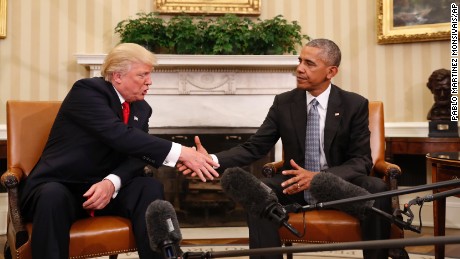
Alums of a disgraced for-profit college chain have spent years trying to cancel their federal student loans. For three years in federal court, the Obama Department of Education told them to keep on paying. Improbably, the Trump administration is poised to say differently.
Under a preliminary accord, the federal government would invite tens of thousands of former students, who more than 20 years ago attended beauty and secretarial schools owned by defunct Wilfred American Education Corp., to petition the Education Department to cancel their unpaid debt and receive refunds on past payments, according to four people familiar with the case, who spoke on condition of anonymity because they were discussing confidential settlement negotiations. The applications are almost certain to be approved, these people said, and the government would foot the bill.
The deal-which is not complete and may change-would resolve a 2014 class-action lawsuit against the Education Department brought by seven former Wilfred students who claimed the feds for decades had been wrongfully collecting on debt that students needn’t repay. Federal law allows borrowers to cancel their loans when their schools violate certain rules, and Wilfred routinely flouted the law by falsely certifying that its students were eligible for government loans, according to the complaint. The lawsuit claimed the department knew the loans were eligible to be forgiven, yet it made no effort to inform debtors of this right.
If finalized, the settlement would represent one of the largest debt-forgiveness schemes undertaken by the Education Department. That it didn’t happen under Obama, who championed student debt relief measures, and instead could happen under Trump, who in November agreed to pay $25 million to settle several lawsuits tied to his own foray into for-profit education, could upend expectations that a Trump-overseen Education Department would favor the interests of for-profit schools over those of allegedly defrauded students.
Jim Margolin, a spokesman for Preet Bharara, the former U.S. attorney in Manhattan, whose office is arguing the case on the government’s behalf, declined to comment. So did Camilla Jenkins, a spokeswoman for New York Legal Assistance Group, whose lawyers represent former Wilfred students, and Eileen Connor, who also represents former Wilfred students as the directer of litigation at Harvard Law School’s Project on Predatory Student Lending. Jim Bradshaw, an Education Department spokesman, didn’t return messages seeking comment.
Wilfred was once one of the largest for-profit school operators in the country, with 58 schools and more than 11,000 students in 1988, court documents show. Like many for-profit schools, it recruited low-income women with the promise of a higher-paying job and a better life, former students alleged. It reportedly ran advertisements around welfare offices. Federal student loans and grants were responsible for most of Wilfred’s revenue.
Allegations of impropriety haunted the company for much of its existence. Authorities sued the company several times, alleging fraud, and in 1991 Wilfred was found guilty of mail fraud and making false statements in two separate criminal cases in federal court.
In 1996, an Education Department employee wrote in a memorandum to her bosses that “systemic violations” of federal student aid rules had been discovered at Wilfred’s schools as early as 1984, court filings show. She recommended that many student loans connected to Wilfred should be discharged as a result.
“We have made substantial progress toward a final settlement,” Jane Greengold Stevens, a lawyer for the former Wilfred students, said in a March 9 court filing. She asked to meet with U.S. District Judge Robert Sweet to discuss “certain nonstandard procedures” the two sides are considering before they submit a potential settlement for court approval.
Ana Salazar, the lead plaintiff in the suit against the Education Department, is among some 60,000 people who took out government-guaranteed student loans to attend Wilfred. She claimed in court papers that she signed federal financial aid forms when she enrolled in 1988, even though she didn’t speak English at the time.
The settlement discussions began in earnest last year, after the federal appeals court in Manhattan overruled a 2015 district court ruling in favor of the Obama administration that dismissed Salazar’s lawsuit on a technicality.
The Trump administration could decide to reject any final settlement. And Wilfred students’ hopes have been crushed before. For example, in June 2014, a few months after they sued the feds, President Barack Obama ordered the Education Department to improve how it communicated with vulnerable borrowers struggling with their debt-a sign that the administration might ultimately agree with former Wilfred students. Two weeks later, the Education Department tried to dismiss the Wilfred lawsuit by arguing that it was under no obligation to inform debtors that they could discharge their potentially invalid loans.
“The indications coming from the Trump Education Department so far is that it may be abandoning students who have been abused by for-profit colleges,” said David Halperin, a lawyer in Washington and a frequent critic of for-profit schools. “If in fact the administration approves a strong settlement, it would suggest there is hope yet.”
(c) 2017, Bloomberg · Shahien Nasiripour

